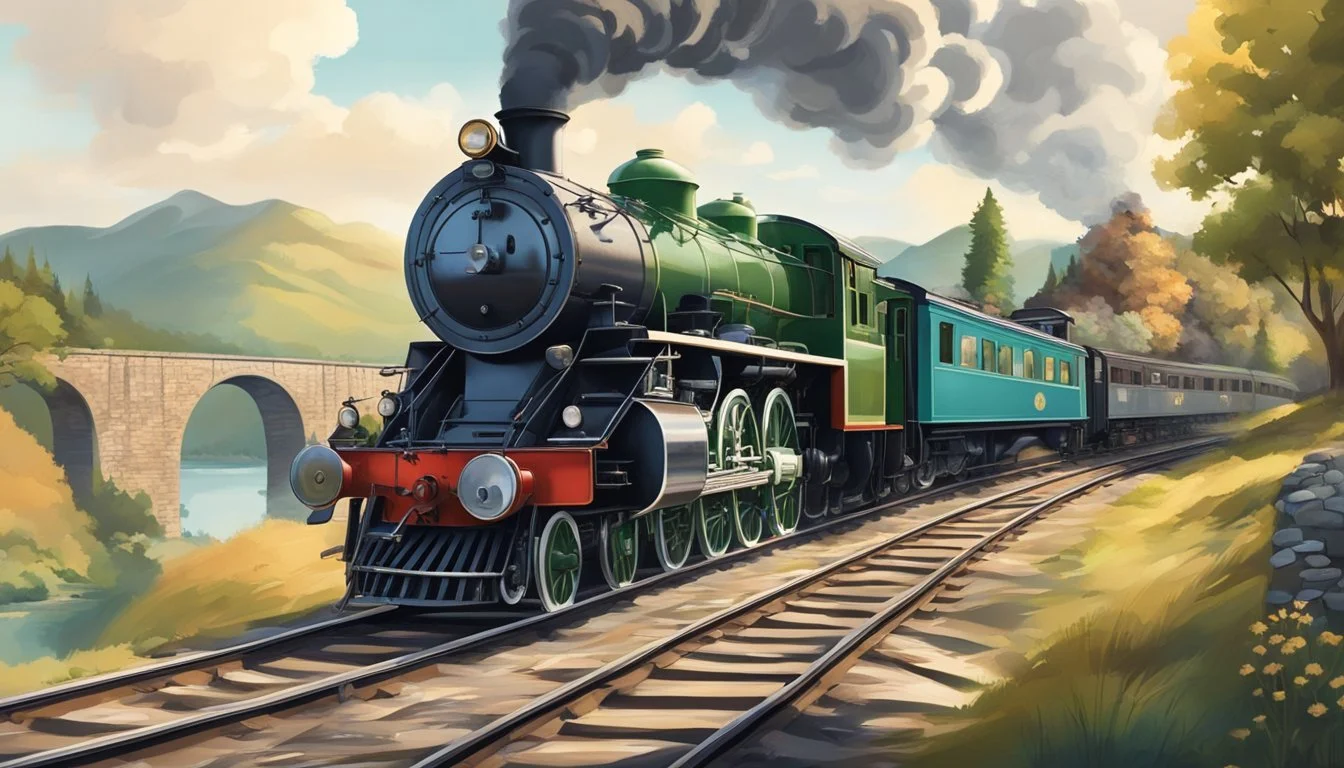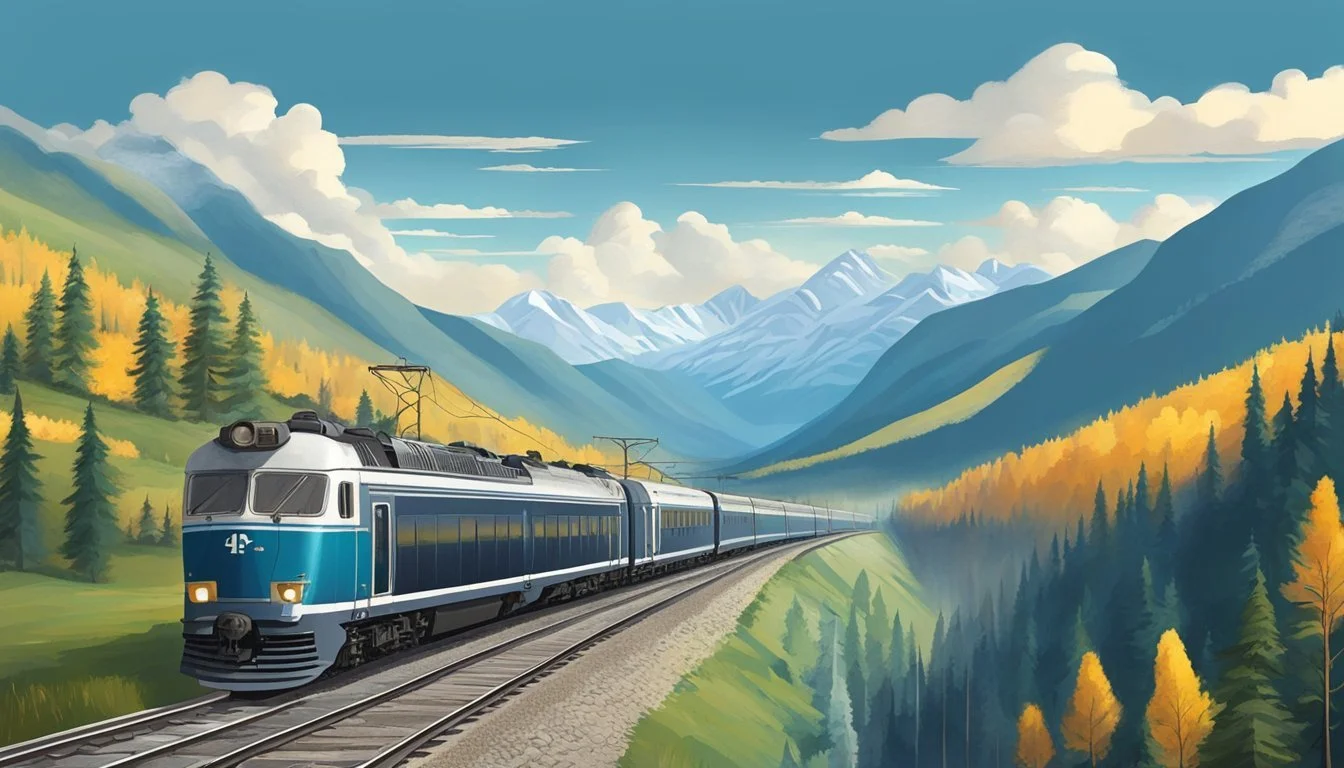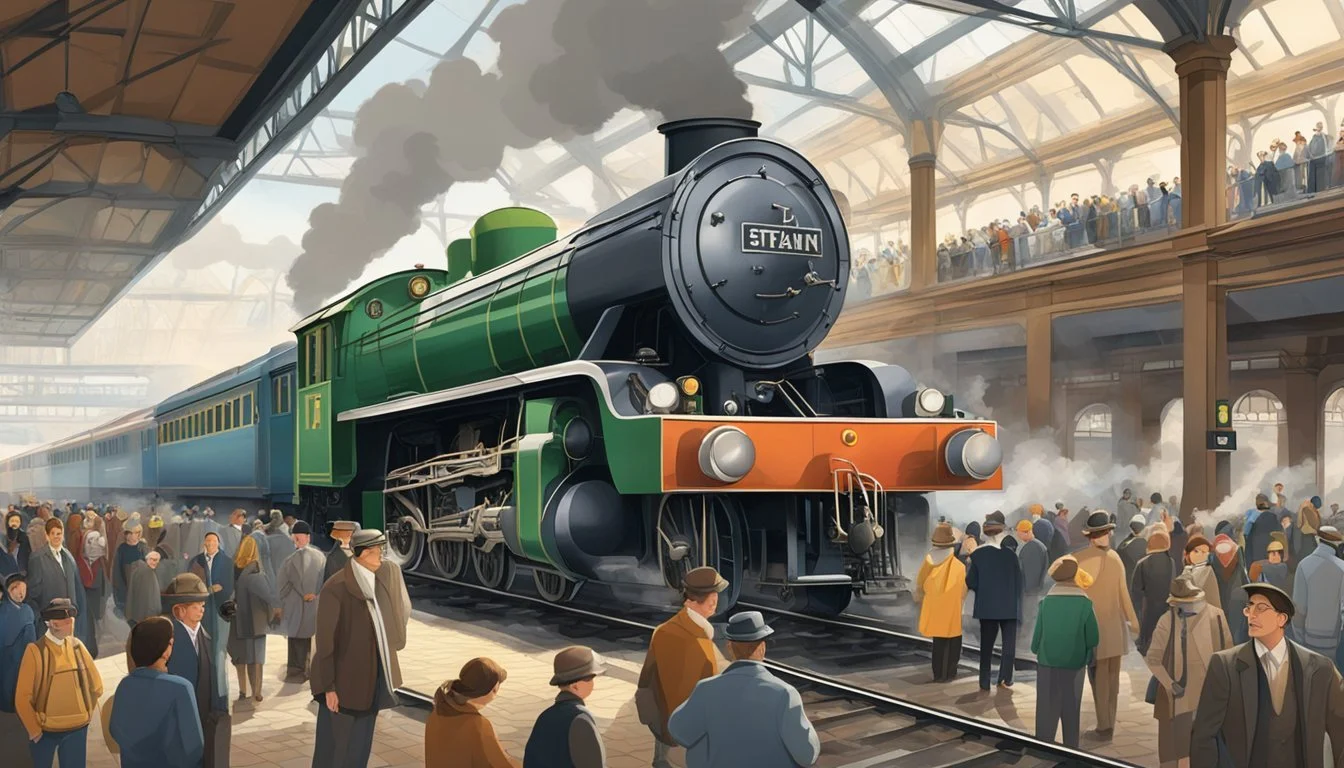4 Fascinating Documentaries for Train Enthusiasts
Journey Through Rail History
Trains have long captured the imagination of people around the world. From their early days as revolutionary transportation to their modern incarnations, these powerful machines continue to fascinate and inspire. For those with a passion for railways, documentaries offer a unique window into the world of trains, exploring their history, engineering, and cultural impact.
Train documentaries provide an immersive experience, allowing viewers to journey across scenic landscapes, delve into railway operations, and discover the stories behind iconic routes. These films often blend stunning visuals with informative narratives, appealing to both casual viewers and dedicated rail enthusiasts. From historical examinations to contemporary explorations, train documentaries offer something for everyone interested in the world of railways.
1) "Trainspotting with Tony Robinson" (2008)
"Trainspotting with Tony Robinson" offers an engaging look into the world of British railways. The documentary follows beloved TV presenter Tony Robinson as he explores the rich history and culture of trainspotting across the United Kingdom.
Robinson visits various iconic railway locations, from bustling city stations to remote countryside lines. He meets passionate trainspotters and learns about their dedication to this unique hobby.
The film delves into the origins of trainspotting, tracing its roots back to the early days of rail travel. It highlights how the pastime has evolved over the years, adapting to changes in technology and transportation.
Viewers are treated to stunning footage of classic locomotives and modern high-speed trains. Robinson's enthusiasm shines through as he shares interesting facts and anecdotes about different train models and routes.
The documentary also explores the sense of community among trainspotters, showcasing the camaraderie and shared passion that brings enthusiasts together.
More information on "Trainspotting with Tony Robinson"
2) "The Railways That Built Britain" (2016)
"The Railways That Built Britain" offers a captivating journey through the history of British railways. Hosted by Chris Tarrant, this documentary series explores the profound impact of rail on the nation's development.
The show begins with Tarrant examining the Puffing Billy, the world's oldest surviving steam locomotive. This sets the stage for a deep dive into the lives of pioneering railway engineers and the hardworking navvies who constructed the tracks and tunnels.
Tarrant uncovers how the advent of rail transformed various aspects of British life. The series reveals the unexpected ways railways influenced the food people ate and the goods they could access.
One episode highlights a tragic incident in Armagh that led to significant changes in railway safety regulations. This demonstrates the series' commitment to exploring both the triumphs and challenges of railway history.
Through engaging storytelling and historical insights, "The Railways That Built Britain" illuminates the crucial role of railways in shaping modern Britain. It offers train enthusiasts a comprehensive look at the technological, social, and economic impacts of this revolutionary mode of transport.
3) "Extreme Railway Journeys"
"Extreme Railway Journeys" is a captivating documentary series hosted by Chris Tarrant. The show takes viewers on thrilling train adventures across the globe, exploring unique rail routes and their historical significance.
Each episode features Tarrant embarking on epic rail journeys through diverse landscapes and cultures. He travels through mountains, deserts, jungles, and even war zones, showcasing the vital role railways have played in shaping different parts of the world.
The series highlights both the beauty and challenges of train travel in various countries. Tarrant's engaging presenting style brings humor and insight to each journey, making complex historical and cultural contexts accessible to viewers.
"Extreme Railway Journeys" covers destinations like Vietnam, the Balkans, and North Africa. It explores how railways have influenced local development, politics, and society in these regions.
The show combines stunning visuals of scenic rail routes with informative content about each country's railway history. It offers train enthusiasts and casual viewers alike an entertaining and educational look at the world's most fascinating rail networks.
More information on "Extreme Railway Journeys" (2012-present)
4) "The Trans-Siberian Railway: 100 Years of a Dream" (2001)
This documentary explores the history and impact of the world's longest railway line. The Trans-Siberian Railway, stretching over 9,000 kilometers, connects Moscow to Vladivostok.
The film showcases the railway's construction, which began in 1891 and was completed in 1916. It highlights the engineering challenges faced during its development across diverse terrains and climates.
Viewers are taken on a journey through time, witnessing the railway's role in Russia's modernization and expansion. The documentary features archival footage and interviews with historians and railway workers.
The film examines the Trans-Siberian's significance during major historical events, including World Wars I and II, and its impact on Russian society and economy. It also explores the railway's cultural influence and its depiction in literature and art.
Today's Trans-Siberian experience is captured through interviews with passengers and staff, showcasing the diverse landscapes and communities along the route. The documentary provides insight into the railway's ongoing importance for transportation and tourism in Russia.
More information on "The Trans-Siberian Railway: 100 Years of a Dream"
Impact of Railways on Society
Railways revolutionized transportation and sparked profound changes in economies, communities, and daily life. Their influence extended far beyond simply moving people and goods from place to place.
Historical Significance
The advent of railways in the 19th century marked a turning point in human history. Trains enabled faster, more reliable transportation of people and goods over long distances. This accelerated industrialization and urbanization, as raw materials and finished products could be moved efficiently between factories and markets.
Railways also played a crucial role in nation-building and territorial expansion. In countries like the United States, Canada, and Russia, transcontinental railroads helped unify vast landmasses and integrate remote regions into national economies.
The railroad industry itself became a major employer and economic driver. It spurred innovations in engineering, manufacturing, and business management that had wide-ranging effects.
Cultural Influence
Trains captured the public imagination and became powerful symbols of progress, adventure, and connection. Railway stations emerged as important civic spaces and architectural landmarks in many cities.
Train travel changed how people experienced time and space. Standardized time zones were adopted to coordinate rail schedules. New concepts of leisure travel developed as railways made distant destinations more accessible.
Trains featured prominently in literature, art, and popular culture. Writers like Agatha Christie used railway settings for mystery novels. Folk and blues music celebrated (and critiqued) the cultural impact of the railroad.
Railways also influenced language, introducing new words and phrases into everyday speech. Terms like "off the rails" and "full steam ahead" originated from rail transport.
Technological Evolution of Trains
Trains have undergone remarkable advancements since their inception, transforming from steam-powered giants to high-speed electric marvels. These changes have revolutionized rail travel and freight transport worldwide.
Advancements Over Time
The first steam locomotives appeared in the early 19th century, reaching speeds of 30 mph. By the 1930s, steam engines could achieve 100 mph. Diesel-electric locomotives emerged in the mid-20th century, offering improved efficiency and power.
Electric trains followed, utilizing overhead lines or third rails for power. They provided cleaner operation and higher acceleration. In the 1960s, Japan introduced the Shinkansen bullet train, capable of speeds over 130 mph.
Today's high-speed trains can exceed 200 mph. The magnetic levitation (maglev) technology enables trains to float above the tracks, reducing friction and allowing for even greater speeds.
Innovations in Train Design
Modern train designs prioritize aerodynamics, energy efficiency, and passenger comfort. Tilting trains like the Italian Pendolino can maintain higher speeds on curved tracks by leaning into turns.
Lightweight materials such as aluminum and carbon fiber have replaced heavier steel components, improving fuel efficiency. Advanced suspension systems provide smoother rides, while regenerative braking systems capture and reuse energy during deceleration.
Smart sensors and AI-driven systems monitor train performance and track conditions in real-time, enhancing safety and maintenance efficiency. Hybrid locomotives combining diesel and electric power offer flexibility and reduced emissions in areas lacking electrification.




